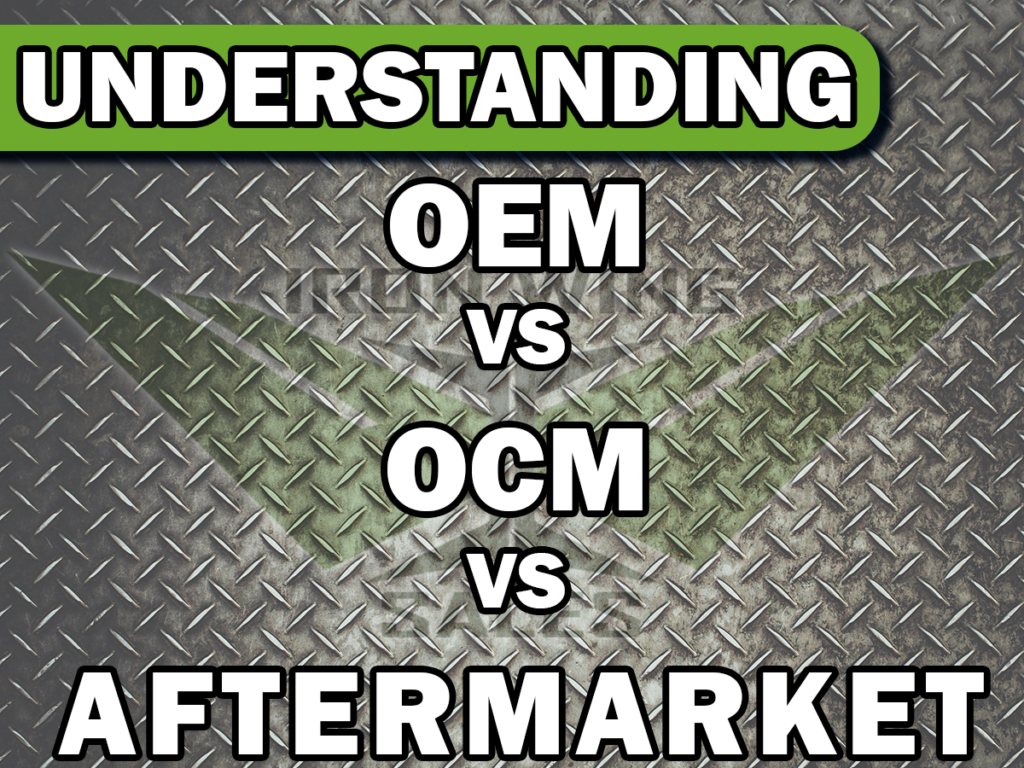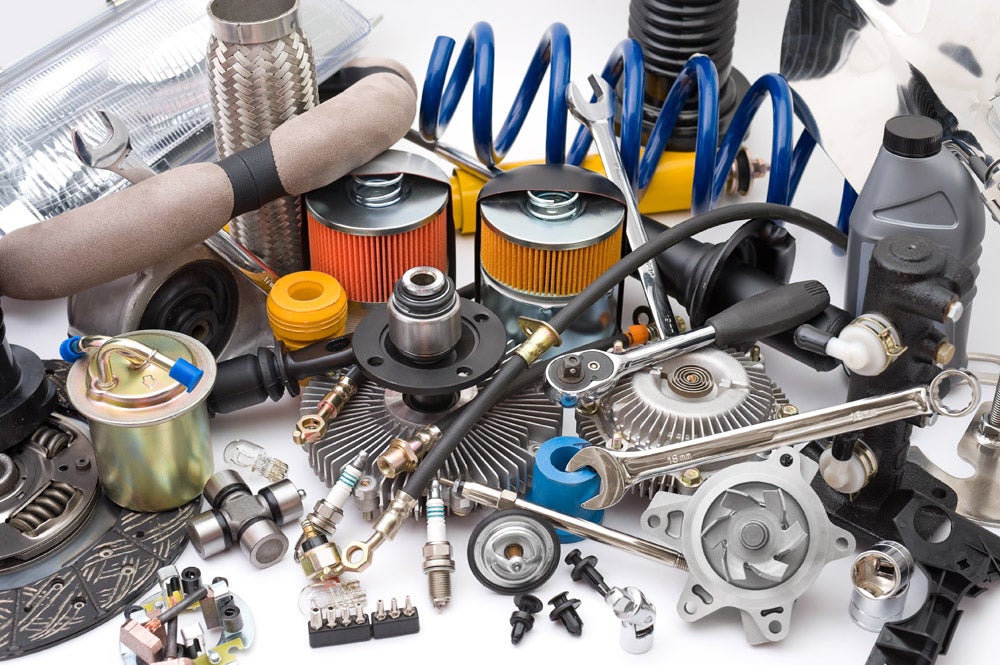Trustworthy OEM Equipment Parts for Seamless Integration and Performance
Wiki Article
The Benefits and Downsides of Picking OEM Building And Construction Components Over New Parts for Your Tools
When it comes to maintaining and repairing equipment, the choice between choosing for initial equipment producer (OEM) construction components versus new components is an important consideration for numerous businesses. While OEM parts are developed to satisfy the details demands of the equipment and are frequently associated with a higher level of quality and compatibility, there are likewise downsides to be considered, such as potential price ramifications and schedule issues.Top Quality and Compatibility Advantages
When thinking about the top quality and compatibility advantages of OEM building components versus brand-new parts, it is vital to examine their precision engineering and seamless integration abilities. OEM building and construction components, being initial equipment made by the very same business that created the equipment itself, are created to precise requirements. This precision design guarantees that OEM components are tailored to fit flawlessly within the existing tools, reducing the threat of breakdowns or compatibility issues. The compatibility advantages of OEM parts extend beyond simply fitment, as they are also engineered to work harmoniously with various other components, optimizing the total efficiency and durability of the devices.
Higher Cost Factors To Consider
Given the premium high quality and compatibility benefits of OEM construction components over repairs, it is essential to now deal with the facet of greater price factors to consider in the decision-making procedure. While OEM parts are understood for their specific fit and high efficiency, they typically come with a greater price factor contrasted to aftermarket alternatives. The initial investment in OEM parts may appear more pricey, but in the future, they can show to be a lot more affordable because of their toughness and integrity.When examining the higher expense of OEM building components is the prospective savings in terms of lowered upkeep and repair work expenses,One vital variable to think about. OEM parts are engineered to fulfill the specific needs of the equipment, which can result in less malfunctions and much less downtime. This can translate into considerable price financial savings for equipment proprietors in terms of reduced repair work and replacement expenses over the life-span of the machinery.
Furthermore, spending in OEM parts can additionally add to preserving the resale value of the equipment. Buyers usually favor equipment that has been fitted with real OEM components, as they are perceived to offer better top quality and efficiency. This can cause a greater resale value for the equipment, offsetting the first higher cost of OEM components. Ultimately, while the higher price of OEM building parts might call for a bigger upfront investment, the long-lasting benefits in terms of cost, efficiency, and reliability financial savings make them a helpful and practical selection for tools proprietors aiming to make best use of the worth of their investments.

Dependability and Guarantee Coverage
In assessing the option between OEM building and construction parts and new components, a vital aspect to take into consideration is the degree of dependability and service warranty coverage provided. OEM construction components, being made by the initial tools supplier, are designed to satisfy the specific requirements of the tools, making certain a high level of integrity.
On the other hand, brand-new parts may not always offer the exact same level of dependability as OEM parts, as they may not have actually been particularly developed for the devices in inquiry. When thinking about reliability and his comment is here guarantee coverage, opting for OEM construction parts may supply a more safe and secure and reputable solution for equipment maintenance and long life.
Efficiency and Durability Enhancements
Having established the relevance of reliability and guarantee protection in the selection between OEM building and construction components and new parts, the emphasis currently changes in the direction of reviewing just how these elements add to efficiency and durability enhancements. OEM building parts are engineered to accurate specs, making sure smooth combination and optimum efficiency within the devices. This precision causes boosted total efficiency and performance, as the parts are made to function sympathetically with the machinery they are meant for.Furthermore, OEM components usually undertake extensive screening to satisfy market requirements and producer requirements, guaranteeing a greater degree of high quality compared to common options. This remarkable quality equates right into boosted durability and longevity for the tools, lowering the threat of unexpected malfunctions and expensive repairs. By using OEM construction components, devices proprietors can experience improved efficiency, extended life-span, and lessened downtime, inevitably leading to improved functional efficiency and cost-effectiveness over time.
Prospective Minimal Availability Issues

When counting on OEM building and construction parts for equipment maintenance and fixings, one significant downside that can arise is the prospective minimal availability of these parts. As a result of elements such as manufacturing timetables, supply chain interruptions, or the discontinuation of particular parts by producers, there may be instances where OEM parts become scarce and even outdated. This deficiency can result in hold-ups in equipment servicing, long term downtime, and increased expenses connected with sourcing alternate options.
Minimal accessibility of OEM building parts can additionally click for source hamper the efficiency of maintenance groups, as they might need to spend additional time and initiative looking for suitable substitutes or waiting on back-ordered components to show up. In cases where particular OEM components are important for optimum equipment efficiency or safety conformity, the unavailability of these parts can posture major functional threats. To minimize these difficulties, tools supervisors should maintain clear communication with vendors, discover options for equipping essential components beforehand, and think about different options or aftermarket parts when OEM alternatives are limited.
Conclusion
Finally, when taking into consideration whether to choose OEM building and construction components over repairs for equipment, it is essential to consider the benefits of high quality, compatibility, reliability, efficiency, and durability versus the downsides of higher expense and prospective limited accessibility. Ultimately, the decision needs to be based on the certain needs and blog concerns of the devices owner, as well as the relevance of warranty coverage in guaranteeing long-lasting fulfillment and operational performance.When it comes to maintaining and fixing devices, the decision between deciding for initial tools manufacturer (OEM) building and construction parts versus new components is a crucial consideration for many businesses.Provided the superior quality and compatibility advantages of OEM construction parts over new components, it is vital to currently deal with the element of greater price considerations in the decision-making procedure.On the other hand, new components might not constantly use the very same level of dependability as OEM components, as they might not have been especially created for the tools in concern.When counting on OEM construction components for tools upkeep and fixings, one substantial disadvantage that can develop is the prospective restricted accessibility of these components. To mitigate these difficulties, equipment supervisors ought to keep clear interaction with suppliers, explore options for equipping critical components in breakthrough, and think about alternate options or aftermarket parts when OEM alternatives are scarce.
Report this wiki page